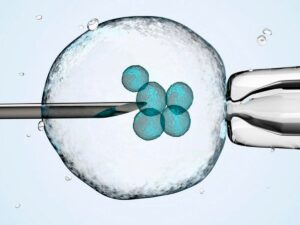Fertility is a vital aspect of women’s health, directly impacting family planning and overall well-being. In the UK, infertility affects about one in seven couples, with female factors contributing to nearly half of these cases. Understanding the causes of female infertility and the available diagnostic options is essential for women seeking to take control of their reproductive health and make informed decisions about treatment.
Female fertility depends on a combination of factors, including ovarian reserve, hormonal balance, uterine health, and the presence of any structural or genetic issues. Fertility tests are designed to identify obstacles to conception and guide the development of personalized treatment plans. The process typically begins with a thorough medical history and a series of targeted tests.
Blood tests are a cornerstone of fertility assessment. Progesterone levels are checked to determine if ovulation is occurring, and additional hormones like follicle-stimulating hormone (FSH), luteinizing hormone (LH), estradiol, thyroid-stimulating hormone (TSH), prolactin, and anti-Mullerian hormone (AMH) are measured to assess ovarian reserve and reproductive function. The AMH test, in particular, provides insight into the number of eggs remaining and can be performed at any point in the menstrual cycle. If periods are irregular, gonadotrophin levels are measured to further evaluate ovarian activity1235.
Screening for infections such as chlamydia is also important, as untreated sexually transmitted infections can impact fertility. A swab or urine test is used to detect chlamydia, and treatment with antibiotics is provided if necessary1.
Imaging studies play a critical role in diagnosing structural issues. Transvaginal ultrasound allows doctors to visualize the ovaries and uterus, check for cysts, and perform an antral follicle count to estimate ovarian reserve5. Hysterosalpingography (HSG) is a specialized X-ray that uses dye to assess the shape of the uterus and the openness of the fallopian tubes, identifying blockages that could prevent conception7. Sonohysterogram (SHG) and hysteroscopy are additional imaging techniques that help detect fibroids, polyps, or scarring inside the uterus lining257.
Advanced diagnostic procedures may include laparoscopy, a minimally invasive surgery that provides a direct view of the reproductive organs, helping to diagnose and treat conditions like endometriosis or pelvic adhesions. An endometrial biopsy can be performed to assess the uterine lining’s receptivity to implantation and diagnose chronic inflammation or hormonal imbalances.
Genetic testing is recommended for women with a history of recurrent pregnancy loss or genetic disorders in the family. Karyotyping detects chromosomal abnormalities, while single-gene testing identifies mutations linked to inherited conditions such as cystic fibrosis or fragile X syndrome.
Fertility testing is a comprehensive process, and the results guide specialists in creating tailored treatment plans. If you are experiencing difficulties conceiving, consulting a fertility specialist is the first step. With ongoing advances in reproductive medicine, many fertility challenges can be overcome, offering hope to women and couples striving to achieve their family-building goals.
For those seeking information online, it’s important to choose high-quality, up-to-date resources and consult with qualified healthcare providers. Understanding the types of fertility tests available and their role in diagnosing infertility empowers women to take proactive steps toward managing their reproductive health and achieving successful outcomes.











